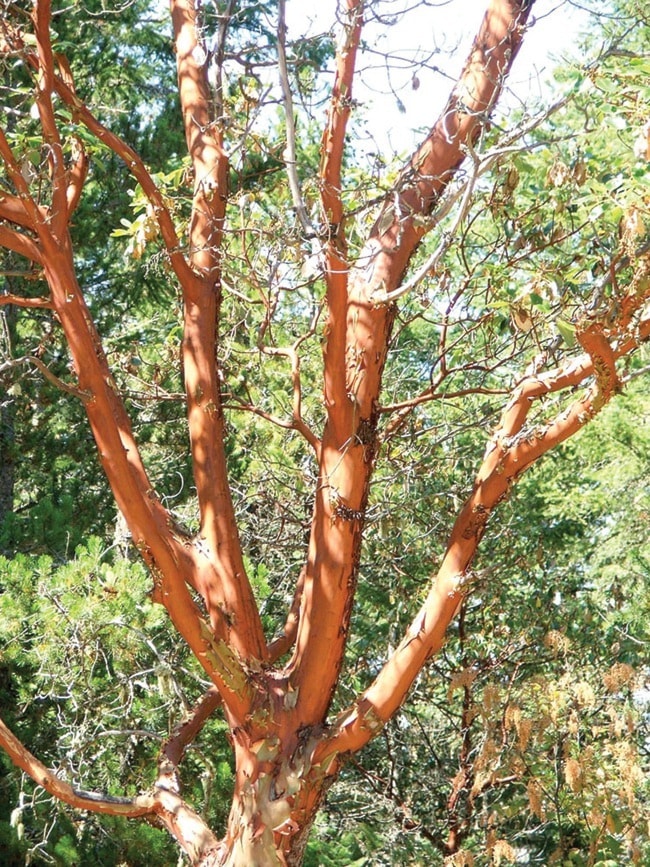A blight affecting arbutus trees on Vancouver Island may not be a big worry, according to the experts.
"Neofusicoccum arbuti, a fungus that occurs naturally in this region, can cause stem and branch cankers and some of the branch dieback," said Dr. Brenda Callan, scientist with Natural Resources Canada at the Pacific Forestry Centre in Victoria.
"Normally it only causes disease symptoms when the trees are stressed by other factors such as drought or winter wind damage," she said, adding that most trees recover through the spring.
Parksville parks foreman and certified arborist Warren Payne said, "the blight is pretty prevalent in this area with the leaves turning black."
But he said property owners can just prune the dead areas and a couple inches into the healthy wood, then make sure to clean up the leaves and branches from the ground where they could still spread the disease.
He said that while there are a number of arbutus trees on city property, they don't do much to deal with the blight, largely due to limited recourses.
Instead they keep an eye on them and he notes they are such a hard wood there is rarely danger of major failure. "They'll stand for a long time, even completely dead."
"You can think of your arbutus tree as a salad bar for insects and fungal disease," Callan said, explaining this is the northern end of the arbutus range meaning they are more vulnerable here.
They cling to shorelines and rocky areas where they can outgrow Douglas fir, according to an NRC news release. Their roots dig into marginal sites, making them more at risk for disease or stress from adverse weather, but this doesn't mean sick-looking trees are dying.
"Arbutus trees always look their worst in spring, before the old spotty and winter-damaged, browned leaves are cast in the summer" Callan said.
Many different organisms can cause leaf and twig blackening, plus arbutus are prone to winter damage. Over a dozen different leaf spot fungi will cause brown leaves.
A tree heavily affected by this fungus can go into a downward spiral of decline, and in this weakened state, other agents might join in and finish the tree off.
The good news is that by mid-spring the majority of arbutus trees will have healthy green buds and most of the affected leaves will fall off during the summer.
Callan agrees home owners can help their arbutus trees through usual proper maintenance like fertilizing and pruning dead branches promptly.
She recommends avoiding watering foliage to decrease the spread of fungal spores.
